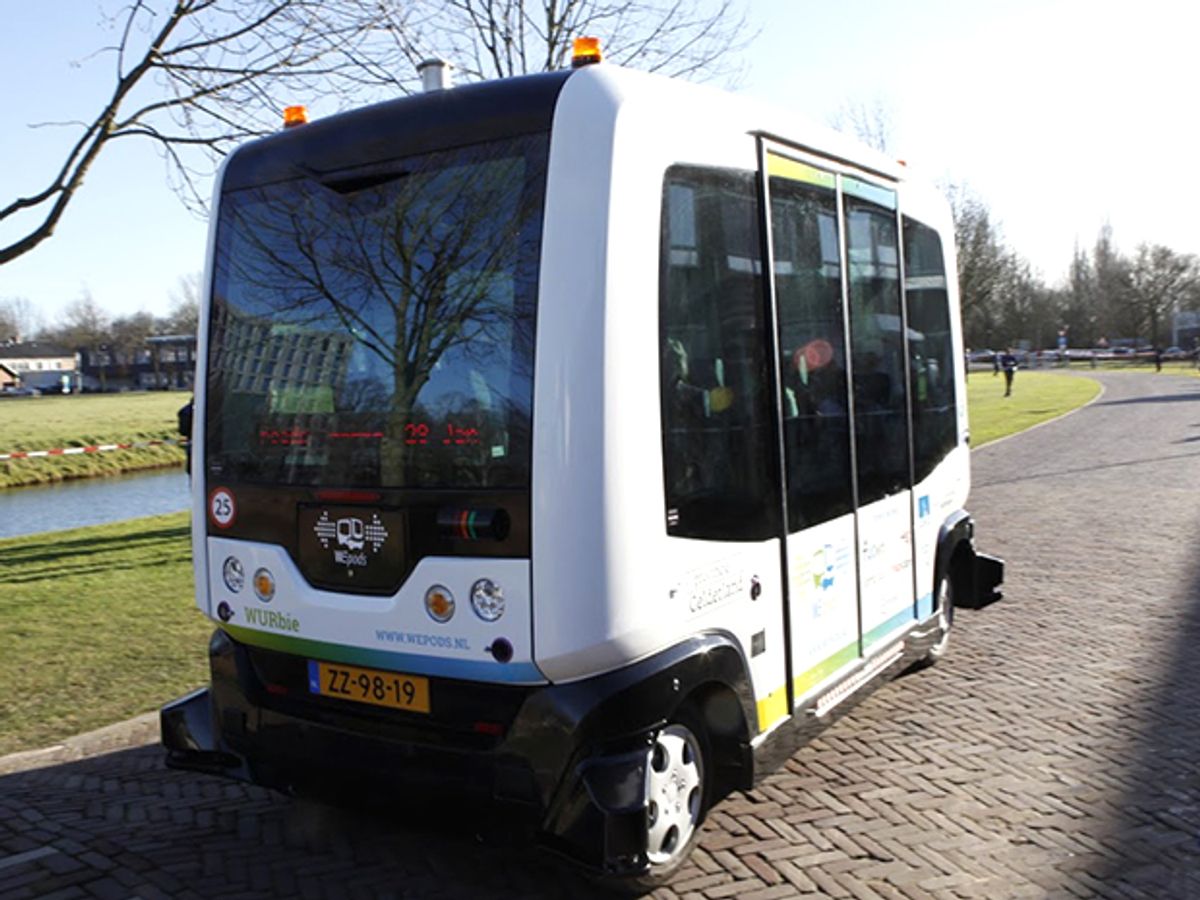Six passengers took an unusual ride last week. The shuttle bus they were on had no one behind the wheel. That short trial run along a lake in the Dutch town of Wageningen marked the first time such a self-driving vehicle had appeared on public roads in the Netherlands.
The WePod autonomous vehicle is an electric, driverless shuttle bus that could hit top speeds of 40 kilometers per hour when fully operational. But it maintained a speed of just 8 km/h during the first short demonstration run along a 200-meter stretch of road, according to The Guardian. The WePods could eventually bump their speeds up to the 25 kilometer-per-hour range during their first actual testing phase as they mix with other normal road traffic.
“With this project we are taking new steps towards making self-driving transport a reality in practice,” said Schultz van Haegen, Minister of Infrastructure and the Environment for the Netherlands, in a Jan. 28 statement. “It is only through practical testing that we can acquire new knowledge, not just technical knowledge, but also knowledge regarding safety, liability and privacy.”

Existing self-driving buses such as the Rotterdam Rivium shuttle bus in the Netherlands, and the Heathrow shuttles in London, U.K., operate only within dedicated lanes separate from other traffic. By comparison, the WePod shuttle buses, developed by Delft Technical University in the Netherlands, are meant to operate autonomously among other vehicles.
The WePod vehicles have onboard computers to control all the braking and steering commands. They also come equipped with cameras, radar sensors, and laser sensors to detect their surroundings. But a human operator monitors the autonomous vehicle’s progress remotely from a control room and can also intervene if necessary.
WePod’s first test phase is scheduled to take place on the campus of Wageningen University. If all goes well, Dutch planners hope to expand the route to so that it extends from the school to the town’s Ede-Wageningen railway station.
Such a project represents just one of many self-driving vehicle efforts taking off around the world. For example, a Swiss company has proposed an underground tunnel with dedicated lanes for autonomous delivery trucks to efficiently move goods from city to city.
Jeremy Hsu has been working as a science and technology journalist in New York City since 2008. He has written on subjects as diverse as supercomputing and wearable electronics for IEEE Spectrum. When he’s not trying to wrap his head around the latest quantum computing news for Spectrum, he also contributes to a variety of publications such as Scientific American, Discover, Popular Science, and others. He is a graduate of New York University’s Science, Health & Environmental Reporting Program.



